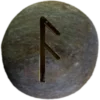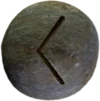Last Updated on December 22, 2024


Hendingar (pronounced “HEN-ding-ar”) refers to the rhyming elements in Old Norse skaldic poetry, particularly in the dróttkvætt (pronounced “DROTT-kvett”) meter. This poetic form played a central role in Viking Age storytelling, using intricate rhymes and meter to convey narratives, praises, and historical events. The term hending can also refer to the specific rhymes within a verse, categorized into aðalhendingar (full rhymes, pronounced “AHTH-ahl-hen-ding-ar”) and skothendingar (half-rhymes, pronounced “SKOTH-hen-ding-ar”).
Dróttkvætt, meaning “court meter,” was one of the most complex and esteemed forms of Norse poetry. Skalds used it to praise kings, describe battles, or recount mythological tales ![]() . Each stanza typically contained eight lines with six syllables each, adhering to strict alliteration and rhyming rules. The use of hendingar added musicality and rhythm, making the poetry easier to memorize and recite.
. Each stanza typically contained eight lines with six syllables each, adhering to strict alliteration and rhyming rules. The use of hendingar added musicality and rhythm, making the poetry easier to memorize and recite.
The Prose Edda, written by Snorri Sturluson, includes detailed examples and descriptions of dróttkvætt and hendingar. This work preserves many skaldic verses, showcasing their significance in Viking culture. Poems like these often employed kenningar, metaphorical phrases that added layers of meaning, such as calling the sea a “whale-road.”
Hendingar demanded linguistic skill and deep cultural knowledge from skalds. These poets served as historians, entertainers, and cultural preservers, often earning high esteem in courts. The structural beauty reflects a unique blend of creativity and discipline, making it a lasting legacy of Norse oral tradition.
Two Elder Futhark Runes Associated with Hendingar
Ansuz (pronounced “AHN-sooz”) represents communication and wisdom, aligning with the poetic art of conveying meaning through hendingar. ![]()
Kenaz (pronounced “KAY-nahz”) symbolizes creativity and illumination, echoing the intellectual and artistic brilliance required to compose hendingar.
Importance to Asatruar
Hendingar demonstrates the enduring value of storytelling and poetic tradition among Asatruar. Its structure reflects intellectual and cultural heritage, inspiring modern practices. By engaging with hendingar, Asatruar connect to their ancestors’ art, fostering a deeper sense of belonging and identity. This poetic form offers a framework for preserving stories while celebrating creativity, honor, and wisdom.


